- europages
- >
- COMPANIES - SUPPLIERS - SERVICE PROVIDERS
- >
- fruit trees
Results for
Fruit trees - Import export
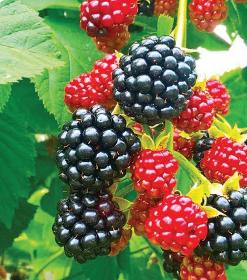
ECONOMIC COOPERATIVE DOO
Serbia
PLANT: The plant is vigorous, semi-erect, free-standing, thornless, and productive, giving high yields. Easy to grow, with a perennial life cycle. Grows in a shrub habit. Starts bearing a year after being planted. Considered a more winter hardy variety, also tolerates drier and hotter conditions. Gives best results when positioned in full sun or part shade. Pruning should be done twice a year. POLLINATORS: Self-pollinating. FRUIT APPEARANCE: Round to conically shaped and shiny, jet black in color, with a firm texture and sweet taste and mild aroma. The fruit doesn’t fade, leak or soften even in hotter weather. FRUIT SIZE: Medium-large to large. HARVEST: July to mid-August. COMMERCIAL USE: An abundant variety, with high-quality fruits and large yields. Ideal for fresh consumption, preserving, jam and jelly making, baking, etc.
Request for a quote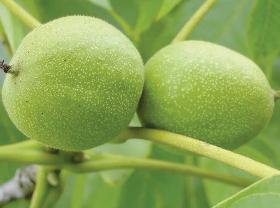
ECONOMIC COOPERATIVE DOO
Serbia
The most planted variety worldwide and one of the most popular ones when it comes to walnuts. Moderately to very vigorous and semi-erect, with a medium growth rate. It yields extremely abundantly. An early bearer starts bearing two to three years after planting. Late-leafing and a late flowering variety. Pruning is advised. POLLINATORS: Partly self-fertile. Franquette is the best pollinator for this variety. FRUIT APPEARANCE: An oval, thin shell with a smooth surface, light-colored, well-sealed. The high-quality kernels are light in color, easily detached from the shell and split in halves, with a mild flavor. FRUIT SIZE: Large. HARVEST: End of September to mid-October.
Request for a quote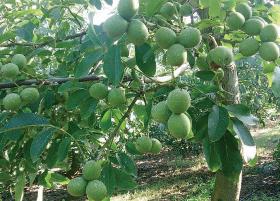
ECONOMIC COOPERATIVE DOO
Serbia
TREE: Grows upright at a medium growth rate with medium vigour. An early flowering and a late leafing variety, thus protected against late spring frosts. An early bearer starts yielding in the 3rd or 4th year af ter planting. It has regular and very high yields. Tolerates many soil types. Prefers partial to full sun. Drought resistant. POLLINATORS: Self-fertile. A good pollinator for other nut varieties. Fernette and Franquette are suitable pollinators. Plant 1 Fernette tree on every 10th Fernor. FRUIT APPEARANCE: Globular nuts with a light-colored, thin to medium thick shell and a beaded seam. The kernel is light in color and easily ex tracted from the shell. FRUIT SIZE: Medium to large. HARVEST: End of September to early October.
Request for a quote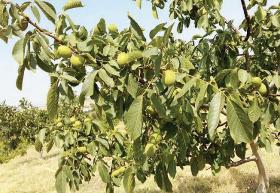
ECONOMIC COOPERATIVE DOO
Serbia
Medium vigorous. Early blooming and a late leafing variety, thus protected against late spring frosts. Grows at a medium growth rate. Early bearing, starts yielding in the 3rd or 4th year after planting. Has high productivity and heavier crops than those of Franquette’s. Thrives best in partial to full sun. Tolerable to many soil types. POLLINATORS: Self-fertile. A suitable pollinator for Fernor and Chandler, as well as for other varieties. FRUIT APPEARANCE: Globular nuts with a thin, fragile shell. Predominantly white kernels (80-85%), easily extracted from the shell. Large in size and tasty. FRUIT SIZE: Large. HARVEST: End of September to the beginning of October.
Request for a quote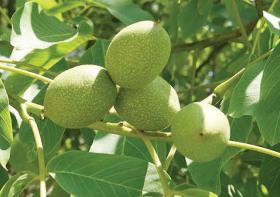
ECONOMIC COOPERATIVE DOO
Serbia
A large, mildly-vigorous, upright tree that gives fairly productive yields. Easy to grow, with a medium growth rate. Very little pruning is recommended. A late bearer upon planting and also a late-leafing variety, thus protected against late spring frosts. Thrives best in full sun. POLLINATORS: Self-fertile, but gives amazing results when planted near another variety (particularly when the tree is young), such as Chandler. Often used as a pollinator for Chandler. FRUIT APPEARANCE: A flattened shape walnut with a good caliber. A medium-thin, well-sealed shell. The kernel is light in color as well as in weight. Good taste, strong nut, sweet flavor. FRUIT SIZE: Medium to large. HARVEST: Mid-September.
Request for a quote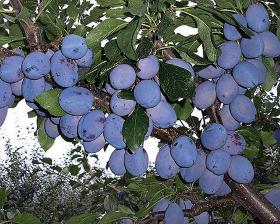
ECONOMIC COOPERATIVE DOO
Serbia
A moderately vigorous tree with a loose pyramidal crown. This variety starts yielding early after planting and gives regular and heavy yields on 1-year branches. It is recommended to be pruned regularly. It is flowering mid-early. POLLINATORS: An outstandingly self-pollinating variety. FRUIT APPEARANCE: Elongated, egg-shaped fruit with a pointer top. Rich blue colored thin skin with a greenish-yellow flesh which is firm and crispy, yet juicy in texture. Aromatic, sweet to sour in taste. FRUIT SIZE: Medium-large. HARVEST: Mid to late August. COMMERCIAL USE: Excellent yielder when maintained properly. Consumed fresh or dried, suitable for processing,
Request for a quote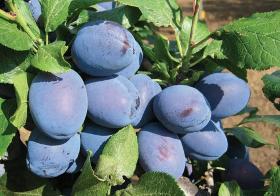
ECONOMIC COOPERATIVE DOO
Serbia
A vigorous variety with a pyramidal, with a rather sparse crown. Regular, abundant, high potential crops. Flowering is mid-early. POLLINATORS: Suitable pollinating partners include varieties such as Čačak’s Beauty, Čačak’s Early and Čačak’s Native. FRUIT APPEARANCE: An oval, egg-shaped fruit. Dark blue, medium-thick skin with a greenish-yellow, very firm but juicy flesh. Sweet to sour in taste. FRUIT SIZE: Large to very large. HARVEST: Mid-August. COMMERCIAL USE: Handles transport excellently. Suitable
Request for a quote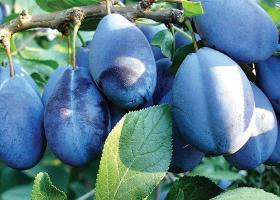
ECONOMIC COOPERATIVE DOO
Serbia
Medium vigorous with a relatively loose crown, round to pyramidal in shape, with strong and flexible branches. Stanley is an early, regular and heavy bearer. Stanley is a good choice for humid climates. Thrives best in sunny places and is easy to grow. It flourishes mid-early. Relatively resilient to drought. POLLINATORS: Self-fertile, but yields more abundantly if planted next to another variety. An excellent pollinator for other varieties. FRUIT APPEARANCE: Oval-shaped fruit. Dark blue to purple in color with a firm, juicy, greenish-golden flesh. Sweet, aromatic, rich flavor. FRUIT SIZE: Medium to large. HARVEST: Late, in Autumn (usually second half of August, early September).
Request for a quote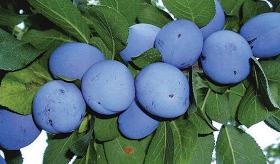
ECONOMIC COOPERATIVE DOO
Serbia
A less to a medium vigorous tree with a pyramidal crown. The skeletal branches are strong and flexible. Starts yielding early, in the second or third year, with regular and abundant yields. It is flowering mid-early. Relatively resilient to drought. POLLINATORS: Self-fertile, but gives best results when planted near another variety. FRUIT APPEARANCE: Round to oval in shape, with a prominently visible seam that divides it into two equal halves. Thin, sturdy, dark blue skin. Firm, green to yellow flesh. FRUIT SIZE: Medium-large. HARVEST: Mid-early, from end of July to the beginning of August
Request for a quote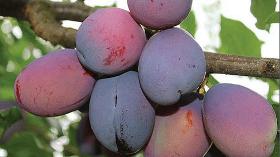
ECONOMIC COOPERATIVE DOO
Serbia
Medium vigorous to a vigorous tree with pyramidal and sparse crown. An early bearer after planting. This variety is a regular and abundant yielder. It flourishes mid-early. POLLINATORS: Self-sterile. Suitable pollinators include Čačak’s Beauty, Čačak’s Best and Stanley. FRUIT APPEARANCE: Egg-shaped, somewhat elongated, with thin, purple to blue skin. The flesh is yellow, medium-firm, juicy, and sweet, with an exquisite taste. FRUIT SIZE: Medium-large to large. HARVEST: Early. End of June to the beginning of July
Request for a quote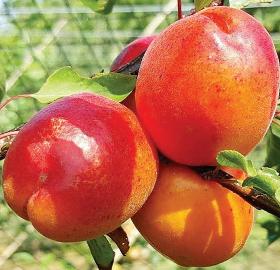
ECONOMIC COOPERATIVE DOO
Serbia
A medium vigorous tree that yields abun - dantly. Crown forms as a wide sphere, and it is recommended to do regular pruning. It is flowering lately, a few days after Hungarian Best. Starts yielding early after planting and is a regular bearer. POLLINATORS: Self-fertile. FRUIT APPEARANCE: Shape is rounded to oval and a bit flat from the side. The skin is of a light orange col - or with a red blush on the sunny side. The flesh orange and juicy, with an exceptional sweet-sour taste. FRUIT SIZE: Medium to very large fruit. HARVEST: Mid to late July. COMMERCIAL USE: Attractive and good quality fruit. Excellent for fresh consumption and widely used in the fruit processing industry.
Request for a quote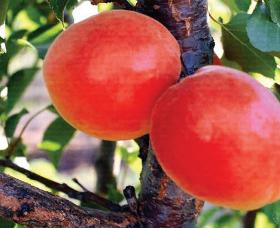
ECONOMIC COOPERATIVE DOO
Serbia
A medium to high vigorous variety. When it starts yielding, it is a regular yielder. Flowering is mid-early. POLLINATORS: Self-fertile. FRUIT APPEARANCE: Round, elongated in shape. The skin is blushing red on the sunny side over an orange base. Intensely dark orange to red flesh. Firm, juicy, with an exquisite taste. Overall great quality. FRUIT SIZE: Large. HARVEST: Late July to early August. COMMERCIAL USE: Excellent when consumed fresh as well as for processing. It handles transporting excellently
Request for a quote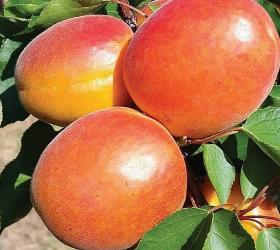
ECONOMIC COOPERATIVE DOO
Serbia
A medium vigorous tree with good resistance to winter frost and mildly sensitive to spring frost and drought. Yields are abundant. POLLINATORS: Self-fertile. FRUIT APPEARANCE: Orange base color with abundant red blushes. Flesh is orange in color, juicy, sweet to sour in taste. Very attractive appearance, and overall good quality fruit. FRUIT SIZE: Very large. HARVEST: Second half of July. COMMERCIAL USE: Attractive, with great yields, and overall good quality of the fruit. Used for fresh consumption and also used in the fruit processing industry
Request for a quote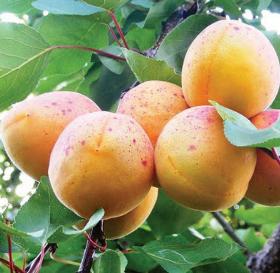
ECONOMIC COOPERATIVE DOO
Serbia
A medium vigorous to vigorous variety, with abundant yields. Resistant to lower temperatures. It is flowering lately. Thrives best in sunny places. POLLINATORS: Self-fertile but gives maximum results when planted with another variety. FRUIT APPEARANCE: Round to oval in shape. The skin is yellow-orange with red blushes and red spots. The flesh is dark red, sweet to sour in taste and firm but juicy in texture. FRUIT SIZE: Medium-large to large. HARVEST: Mid-July. COMMERCIAL USE: Abundant and quality yields. Excellent for fresh consumption, widely used in the processing industry
Request for a quote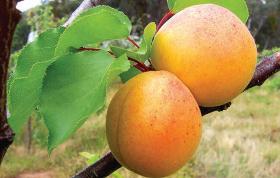
ECONOMIC COOPERATIVE DOO
Serbia
A medium vigorous variety with abundant yields. It flowers early. POLLINATORS: Self-fertile. FRUIT APPEARANCE: Rounded in shape. The skin is bright yellow-orange, the flesh is medium-firm, golden yellow in color. The pit is easily separated. Juicy, aromatic, and sweet-sour in taste. Generally, the fruit of great quality. FRUIT SIZE: Medium-large to large fruit. HARVEST: Achieves complete ripeness from late June to early July. As it tends to fall off the tree as it ripens, it is recommended to pick them when medium ripe (when the skin starts turning green to yellow).
Request for a quote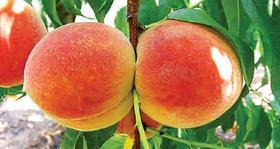
ECONOMIC COOPERATIVE DOO
Serbia
Medium to vigorous with regular and good productivity. Flowering early. Thrives best in warm places. Grows in a compact, upright, rounded habit. Thrives best in full sun. POLLINATORS: Self-fertile, but best results are achieved when planted with another variety. FRUIT APPEARANCE: Asymmetrically elongated fruit. The skin is yellow to orange in color with a red blush on the sunny side. The flesh is white to yellow, firm but juicy.
Request for a quote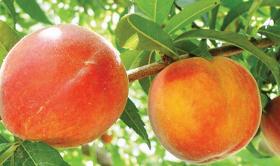
ECONOMIC COOPERATIVE DOO
Serbia
A hardy, vigorous and productive variety, with a low, spreading habit. Grows at a medium rate. Flowering late, and is low temperature resilient. Cresthaven shows best results when exposed to full sun. POLLINATORS: Self-pollinating, but gives the best results when planted near other varieties. FRUIT APPEARANCE: Round shaped, almost fuzzless, smooth but tough skin, yellow with a red blush. Firm yet juicy yellow flesh, showcasing bright red colored areas around the pit. Sweet in taste. FRUIT SIZE: Medium to large. HARVEST: Mid to late August.
Request for a quoteDo you sell or make similar products?
Sign up to europages and have your products listed
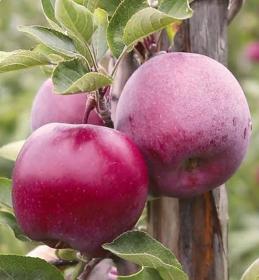
ECONOMIC COOPERATIVE DOO
Serbia
Growth of this variety is medium to weak, not a typical spur variety, upright branch growing habit, fast and highly productive variety. So-called half-spur variety forms flower buds also on one-year stems. It is blossoming just before Golden Delicious. POLLINATORS: Golden Delicious, Granny Smith, Gala, Fuji, Idared FRUIT APPEARANCE: Shape of this variety is oblong, conic, mildly ribbed. Very attractive, uniform, and intense red color on the whole surface of the fruit, with lenticels. The flesh of this variety is juicy, white in color, firm to soft but crisp, and the taste is sweet with almost no acidity. FRUIT SIZE: Medium-large fruit size. HARVEST: Middle to end of September, similar to Golden Delicious. COMMERCIAL USE: Highly productive and great and storage capability. It can be kept in storage for 3 months, in cold storage until Feb
Request for a quote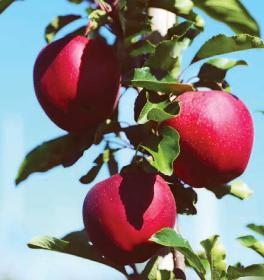
ECONOMIC COOPERATIVE DOO
Serbia
Trees of this variety have medium growth, flowering in midseason to late, around the same time as Golden Delicious. Characterized by high and stable yields. POLLINATORS: Golden Delicious, Granny Smith, Red Delicious, Fuji FRUIT APPEARANCE: Shape of this variety is conical, flattened. Skin is smooth, non-glossy, entirely covered in intense dark red color. It gains color very early. The flesh is yellow-colored, juicy, very balanced sweetness, low on acidity. FRUIT SIZE: Medium HARVEST: Second half - end of August up to the beginning of September COMMERCIAL USE: Gains coloration very early and fast, stable growth and yields. Possibility of gathering fruits in one stage. Very good storage capability
Request for a quote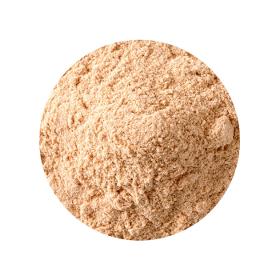
VEHGRO B.V
Germany
"History and Origin Lucuma has been called the 'gold of the Incas'. Lucuma has been cultivated in the Peruvian highlands since 200 AD, when people discovered the caramel-sweet fruit. In Peru, 26 villages are named after this beloved fruit. The lucuma tree grows best at an altitude between 450 and 1000 metres. The tree can withstand drought well, but cannot withstand frost. High humidity is needed to produce the fruit. Lucuma trees only start producing fruit after 5 years and each tree produces up to 500 fruits per year. The fruits are yellow-brown in colour and can weigh up to one kilo each. Processing into Lucuma powder The lucuma tree bears fruit throughout the year, but the main harvest takes place in spring between January and April. When the fruit falls from the lucuma tree it is not yet ripe and the pulp is too hard to be edible. The fruit must be stored under hay until the bitter white latex breaks down and the pulp softens, but even when the fru…"
Request for a quote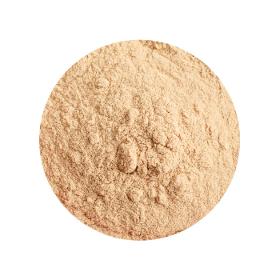
VEHGRO B.V
Germany
"Baobab powder The baobab is the fruit of the baobab tree also called the Adansonia Digitata or monkey bread tree. The last name the tree owes to the many species of monkeys that live off the baobab fruits. The tree can grow very old and is the largest tree in Africa. Not only the fruit is useful for life in Africa. Almost all parts of the tree are useful so it is popularly called ""Tree of Life"". A nice example is that it uses its trunk as a water reservoir. During the rainy season, the monkey loaf tree provides sufficient reserves so that it can survive the dry periods. The tribe is then used by the population as a shop, cattle shed or bus shelter. The fruit has a very high antioxidant content. Baobab powder is also an excellent source of calcium and very rich in vitamins and minerals. After the fruit is processed into powder it consists for about 50% of fiber (pectin) which works as prebiotics. An extraordinary power food<…"
Request for a quote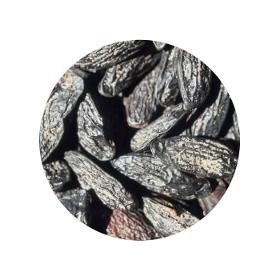
VEHGRO B.V
Germany
"Origin Of Tonka beans Tonka beans (Dipteryx odorata) Tonka beans grow on a Tonka tree and are the seeds of fruit that these trees bear. Tonka beans are narrow, black elongated and wrinkled beans with a brown inside. Production process Tonka beans After the seeds have been harvested, they are dried and soaked in alcohol or rum for a day. Tonka beans soaked in rum give a taste of vanilla, almond and rum. That makes them a perfect seasoning of desserts and patisserie. After adding the alcohol, the beans are dried again and a fermentation process takes place. Tonka beans applications Tonka beans are a common ingredient of desserts, the garnish of desserts (ganache), caramel sugar, ice cream or patisserie."
Request for a quote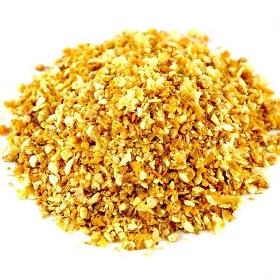
VEHGRO B.V
Germany
"Origin Lemon peel granulate is made from the peel of the lemon. The lemon is a fruit of the lemon tree (Citrus Limonum). The lemon is native to Asia, but is now common around the Mediterranean and America. This lemon peel granulate comes from Chile. Lemon peel contains up to 10 times more essential nutrients than the juice of the lemon. Nutrients and uses The lemon peel granulate contains vitamins A and C and also minerals like magnesium and calcium. In addition, the lemon peel also contains potassium and beta-carotene. The granulate has a sour and fresh taste, however it does not smell as strong as fresh lemon peel. When peeling a lemon, it is important to peel only the part of the peel that is yellow. The white layer underneath contains many substances that taste bitter. The high vitamin C content in combination with the present flavonoid ensure that this product is a healthy addition to any meal. This lemon peel granule can be added to many differen…"
Request for a quote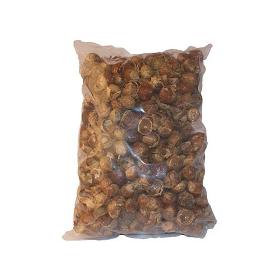
VEHGRO B.V
Germany
"Indian Waxnuts The soapnut tree (sapindus mukorossi) is a plant species within the family of soap tree plants. The fruit known as ""sea nut"" is traditionally used in India for washing clothes and hair. For washing, the nuts are cracked and the shells are placed in a cotton bag in the drum. The soap is similar to fabric softener. After washing, the clothes are supple and certainly not hard. Soap notes do not release any fragrant substances. Use Soapnuts can also be used as a general household cleaner, animal care, to wash hair and for in the dishwasher. The amount of nuts needed varies from 3 to 7."
Request for a quote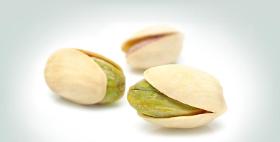
HORST WALBERG TROCKENFRUCHT IMPORT GMBH
Germany
Productinformation Harvesting of pistachio happens in the middle of september. Pistachio trees look very alike to almond trees, their female trees carry fruit after they have been fertilized through their male counterparts. The very first harvest of pistachio is then possible after seven years, and afterwards in a two-year-cycle. Around april pistachio trees are beginning to bloom. When the plant begins ripening, its pit is growing so fast, it will downright burst open its surrounding shell. Pistachio will be roasted in their shell and are traded salted. These tasty green pits are not only consumed as a snack, they can also be found in special types of sausages or on top of chocolate candy – as they are always a delicious addition. Origin Pistachio are cultivated over extended areas in Iran to Turkey and from Pakistan to India. The United States by now also have an enormous industry branch of producing pistachio.
Request for a quote
POLYNEO GMBH
Germany
The fruits of the washnut tree or soap tree have been used all over the Asian region for thousands of years as a natural and gentle cleaning agent. The shell of the washnut contains the active cleaning agent saponin. It is highly water soluble and can be used in a wide range of cleaning and personal hygiene applications. PolyNeo offers highly concentrated washnut extract, which can be used for individual processing. It is produced directly in India and supplied as a highly efficient product. The extract has a saponin content of at least 60 per cent higher than that of the washnut, which contains no more than 15 per cent of the active cleaning agent. It is very versatile and can be used as a fluid, paste, powder or in tablet form.
Request for a quote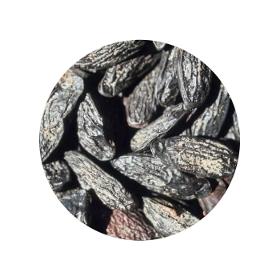
VEHGRO B.V
Germany
"Tonka beans (Dipteryx odorata) Tonkabones grow on a Tonka tree and are the seeds of the fruit that these trees carry. Tonka beans are narrow, black, elongated and wrinkled beans with a brown interior. Once harvested, the seeds are dried and soaked 24 hours a day in alcohol or rum. Tonka beans soaked in rum give a taste of vanilla, almond and rum. This makes them a perfect seasoning for desserts and pastries. After the addition of alcohol, the beans are dried again and a fermentation process takes place. Tonkabones are a widely used ingredient in desserts, the garnishing of desserts (ganache), caramel confectionery, ice cream or patisserie."
Request for a quote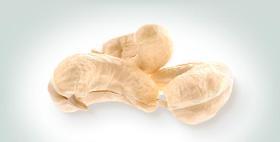
HORST WALBERG TROCKENFRUCHT IMPORT GMBH
Germany
Productinformation Cashew nuts are harvested in India around the time of may and june. The “Kashu” tree derives from the same family of trees as mango- and pistachio-trees. They carry their first fruits approximately after three years - the tree’s maximum carrying capacity is reached after seven years. The cashew tree’s fruit consists of two parts: the cashew “apple” and the actual cashew “nut”, which grows right under the apple part. Cashew nuts are eaten raw in asian regions, but in the rest of the world there are known as a deliciously roasted nut-snack. The cashew apple itself also has a tasty purpose: in the indian market, juices and wine made out of the fruit are very common and popular. Origin India is the major exporting country – especially the national regions of Kerala, Karnataka, Tamil Nadu, Andrdhra Pradesh, Orissa, Maharashtra and Goa. Other countries of origins are Brazil, Mozambique, Kenya, Tansania, Vietnam and Sri Lanka – from America and Africa just over to Asia.
Request for a quote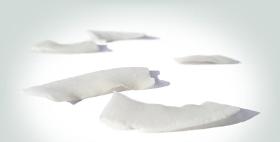
HORST WALBERG TROCKENFRUCHT IMPORT GMBH
Germany
Productinformation Coconuts have been a popular food- and raw material source for thousands of years. On account of their delicious taste and positive traits, coconuts are becoming increasingly popular even in our part of the world. Besides valuable protein, the coconut also provides brain sustenance in the form of fructose as well as palmitic- and oleic acid. The unique characteristics of lauric acid, the main fatty acid in coconuts, have been known for many years. Today, lauric acid is used to counteract viruses, bacteria and fungus, which makes coconut chips a real fitness snack. Origin The coconut palm tree originated in Melanesia, a group of islands in the pacific, north-east of Australia. It spread in part naturally and also through humans. Coconuts can drift a long way in the ocean and remain capable of germinating even after swimming in salty water for 100 days. Polynesian seafarers are responsible for its spread to South-East Asia. The coconut palm tree thrives in the wet and warm tropical belt. Its main growing areas include the Philippines, Indonesia, Sri Lanka, South India, Africa and the coasts and rivers of South America. The tree bears fruit the entire year around and produces - depending on age and location - 30 to 150 ripe coconuts per year. Palm climbers and trained monkeys harvest the coconuts. The coconut is of great value to local people.
Request for a quoteResults for
Fruit trees - Import exportNumber of results
58 ProductsCountries
Company type
Category
- Fruit trees (24)
- Organic food (9)
- Vegetable oils (8)
- Fruit plants (4)
- Food - import-export (2)
- Nursery plants (2)
- Olive oil (1)
- Cosmetics (1)
- Fruits and vegetables - import-export (1)
- Organic cosmetics (1)
- Agriculture - import-export (1)
- Berries (1)
- Chemical catalysts (1)
- Cocoa and chocolate (1)
- Dried fruits (1)
- Food Processing (1)
- Foods, health (1)
- Nitrogen (1)
- Nuts (1)
- Vegetables, fresh (1)